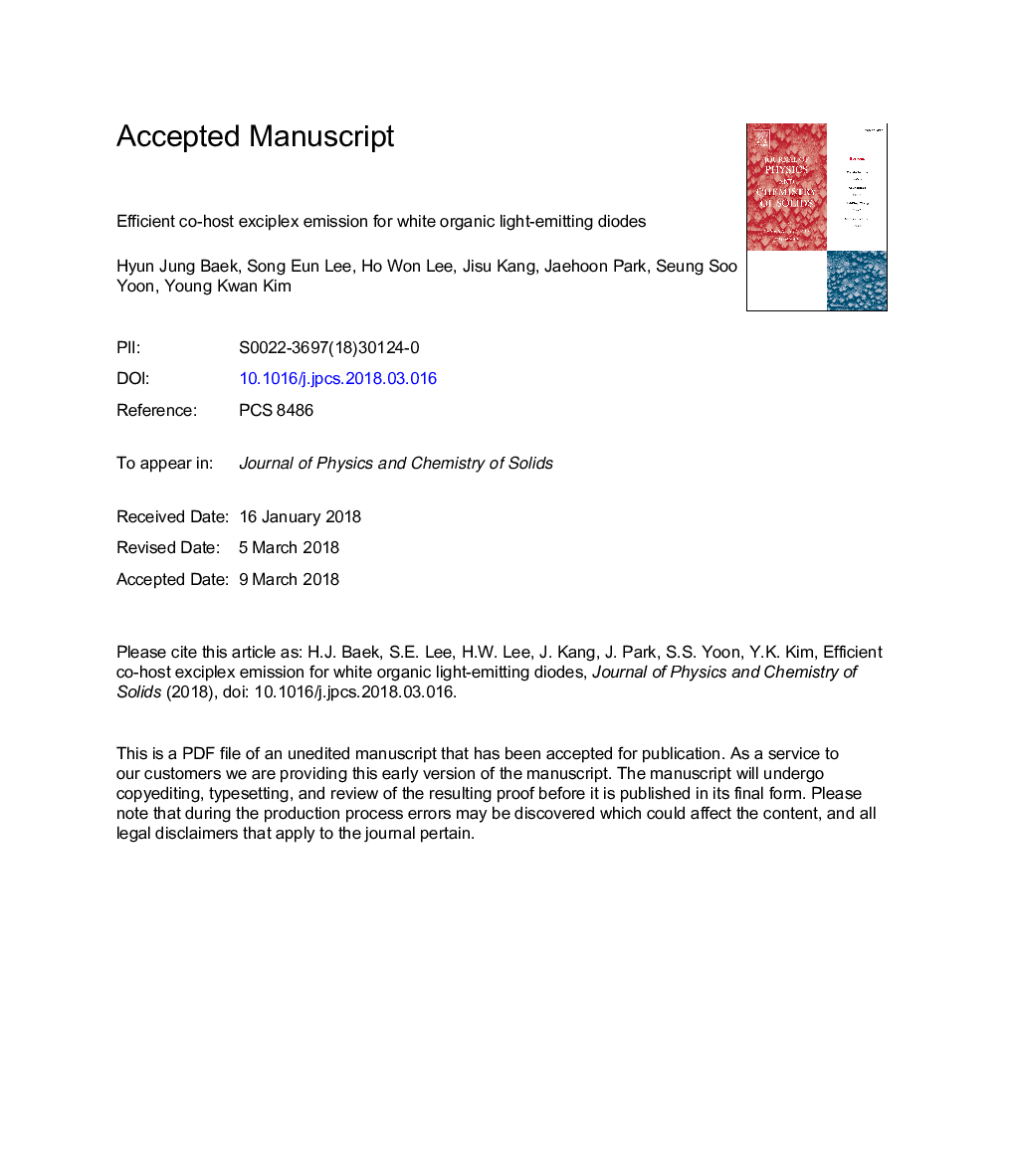| Article ID | Journal | Published Year | Pages | File Type |
|---|---|---|---|---|
| 7920175 | Journal of Physics and Chemistry of Solids | 2018 | 23 Pages |
Abstract
In this study, white organic light-emitting diodes (WOLEDs) based on exciplexes with a simple structure were investigated. Several combinations of hole-transport material and electron-transport material (ETM) were examined to verify the formation of the exciplexes. Various combinations of these exciplexes contributed to the blue and green emitters, as well as the host within the WOLEDs. Four types of WOLEDs were fabricated using various ETMs 2,2â²,2â²â²-(1,3,5-benzinetriyl)-tris(1-phenyl-1-H-benzimidazole) (TPBi), 4,7-diphenyl-1,10-phenanthroline (BPhen), bis(8-hydroxy-2-methylquinoline)-(4-phenylphenoxy)aluminum (BAlq), and 2,6-bis[3-(9H-carbazol-9-yl)phenyl]pyridine (26DCzppy) within the emitting layers (EMLs). In this work, which comprised a blue EML with a 1:1â¯wt ratio of tris(4-carbazoyl-9-ylphenyl)amine (TCTA) and TPBi, a green EML prepared by mixing 4,4â²,4â³-tris[phenyl(m-tolyl)amino]triphenylamine (m-MTDATA) and ETMs at a weight ratio of 1:1, and a red EML. In addition, the exciplex formation was optimized according to the mixing concentration of the green EML when BPhen and TPBi were used as the ETM. As a result, a green EML was obtained at 50â¯wt% TPBi with improved performance, such as an increased power efficiency and a low efficiency roll-off in the range of 200-1000â¯cd/m2 in WOLEDs. It also showed white emission for Commission Internationale de l'Ãclairage coordinates of (0.45, 0.45) at 1000â¯cd/m2.
Keywords
Related Topics
Physical Sciences and Engineering
Materials Science
Electronic, Optical and Magnetic Materials
Authors
Hyun Jung Baek, Song Eun Lee, Ho Won Lee, Jisu Kang, Jaehoon Park, Seung Soo Yoon, Young Kwan Kim,
